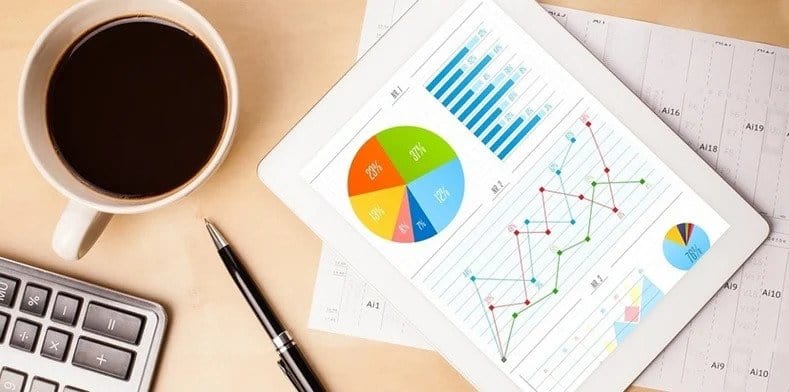This is the first post in our ‘Secrets to Global Growth’ series. Recap on the ‘Products’ post and ‘Ecommerce’ post now.
As technology improves and as customer expectations rise to new heights, it’s now no longer the case that customers need to wait in excess of weeks to receive products when buying from brands overseas. Those who have expanded their businesses correctly have done everything in their power to make sure that the customer experience is still world-class, regardless of where their customers are located.
Nielsen’s Connected Commerce Report appears to agree, saying: “Shoppers are increasingly looking outside their country’s borders, as more than half of online respondents in the study who made an online purchase in the past six months say they bought from an overseas retailer (57%).”
So if you’ve decided it’s time to expand your business overseas, then here are a few financial considerations you’ll need to explore.
Strategy Comes First
Before you even start thinking about the financial side of international growth, you first need to ensure that your expansion plans align with your overall strategy and business goals. Consider whether your expansion plans fit with your financial goals and your exit strategy, as well as your company vision and consumer perceptions about your brand. You’ll also need to ensure you have the right product for the new market you’re hoping to enter into, which we have discussed in detail in our next ‘Secrets to Global Growth’ blog post.
Initial Investment
Expanding into some markets could cost you thousands, or even tens of thousands in market entry costs, while there’s often a two-year lead-time before you can say you’ve successfully penetrated an overseas market. There are also other overheads you’ll need to take into account, such as the staff time spent on expansion plans and implementation, including website changes, and whether you need to increase your customer service hours to support your new overseas customers. Therefore, you’ll need to consider what costs you’ll incur from your expansion plans, and whether the potential sales revenue will help to recoup those costs over time. This article from Alliance Experts is great for establishing how much initial investment you could need.
Personnel
To ensure you’re equipped to look after your new international empire, it’s recommended that you have a lawyer, banker and accountant on-hand, who are all able to specialize in cross-border transactions and what your business needs to be aware of when selling internationally.
Landed Costs
If your international expansion plans also involve buying goods overseas, then it’s important that your cost prices accurately reflect all of the costs involved. Landed costs include things like freight charges, insurance costs, and import duty, calculated from where the item began its journey up to the final destination, and they all need to be accounted for. This could mean that your sale prices when selling to overseas customers need to increase, simply to help cover all of these extra costs that are often not required when selling in your home country.
Other Costs
Speaking of different pricing strategies, remember to take into account exchange rate gains and losses, increased unit production costs and extra inventory storage that may be needed in order to launch your products into foreign markets. You’ll also need to be aware of other fees as well, like Amazon and eBay fees for each country you sell to, as well as the extra costs involved if you hit or exceed thresholds for each country, as discussed below.
UK Businesses Selling to Other EU Countries
For VAT-registered UK businesses, you’ll need to be aware of selling rules if you sell from the UK to Europe. For instance, you need to declare to the HMRC up to set thresholds; once you hit these thresholds you are liable for tax in the country you’re selling to. If using a 3PL, Amazon FBA or even your own warehouse in another country, you may be liable to pay VAT in that country immediately.
There are extra reports you may need to complete in order to show this information. An EC Sales List (ESL) is required to show the HMRC the customer details for each of the EU customers buying from you, the value of the goods that were sent to them, as well as the customer’s country code. You’ll also need to show the total value of the goods moved across the EU on your VAT return, and there may be a need for you to complete Supplementary Declarations (SDs). These extra SD reports come under the heading of Intrastat reporting, which we explain in detail in this knowledgebase article.
US Businesses Selling to EU Countries
For US businesses selling to the EU, once you’ve reached certain country thresholds, you’ll be required to VAT register in each country you sell to. As an example, the threshold for selling to the UK is currently £85,000, while countries like Austria and Luxembourg are as low as €30,000, although these costs may be subject to change in the new tax year and beyond. Our partners, Avalara, have created this great guide to help you establish what each of the current thresholds are. Furthermore, if you’re selling on Amazon, this guide we’ve created is a great indication on how you might be affected when selling across the EU.
Business Management Software to Support Your International Growth
At Brightpearl, we know that in order to expand overseas, you need a flexible back office system that not only enables that type of growth, but that scales with your business as it grows. We exist to support retail and wholesale growth, which means we place no restrictions on access to change. So if you’re intent on using Brightpearl to help you to expand your business, then you’ll have the confidence that you can make changes to your back office in a matter of hours; no developer, product expert or extra cost required.
Here’s what a couple of our customers have said:
Following an impressive 3-year growth rate of 1,233%, David Keith, Chief Technology Officer, at hydroponic supplies business, Growers House, said: “Brightpearl has helped us achieve that growth. Brightpearl has the best flexibility for us and it’s scalable for us to get to the next level and beyond.”
While Norwegian fashion brand, Greater Than A, have had ambitious international growth plans from the very beginning: “We have large ambitions to expand internationally – we’ve already secured some sales in German-speaking countries for our new collection as well as a client in the US – so this was a key part of the decision to make this type of investment from day one. Brightpearl will allow us to have a rapid build-up, manage our costs and allow us to work to sustainable change within the industry. This means every person working for us can focus on building the brand, being ‘spearheads’ of the company and interacting with customers, rather than working in the office, doing tasks that our customers can’t see.”
Do you want to find out how Brightpearl can fit into your own plans for growth? Book a demo now, or give us a call!
And if you want to recap on the other posts in this mini-series, you can do so now via the following links:




